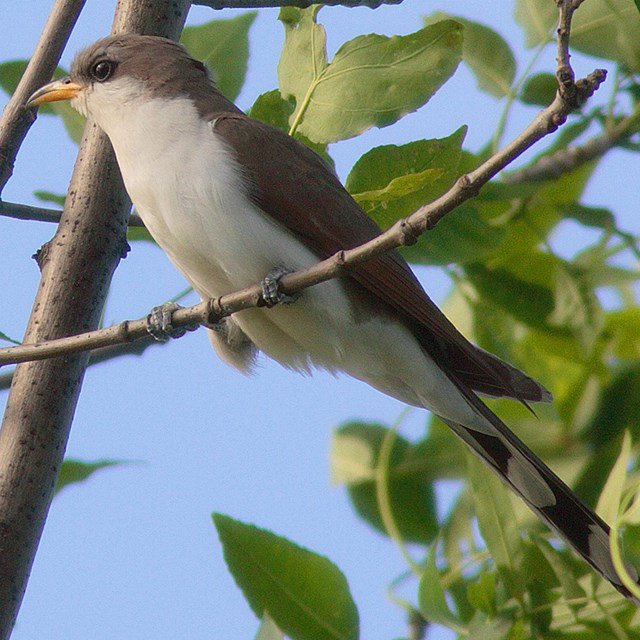For Immediate Release, February 26, 2020
|
Contact: |
Michael Robinson, (575) 313-7017, michaelr@biologicaldiversity.org |
Nearly 500,000 Acres Proposed as Protected Habitat for Western Cuckoo
Rivers in Arizona, California, Colorado, Idaho, New Mexico, Texas, Utah to See Better Protection
SILVER CITY, N.M.— In response to litigation and decades of advocacy by the Center for Biological Diversity, the U.S. Fish and Wildlife Service today proposed 493,665 acres, including more than 1,200 linear miles in seven states, as protected critical habitat for western yellow-billed cuckoos.
The migratory songbirds once nested along rivers and streams across the West, but they have disappeared from many areas because of the loss and degradation of suitable streamside forest habitat. When the Fish and Wildlife Service previously proposed 546,335 acres of critical habitat for the cuckoo in 2014, the breeding population had dwindled to an estimated 680 to 1,025 nesting pairs, including just 350 to 495 pairs in the United States and the rest in Mexico.
“We’re delighted to see cuckoos and the rivers these songbirds need to survive on the path to getting long-overdue protection,” said Michael Robinson, a conservation advocate at the Center. “Dams, mining, development and cows have all harmed the West’s once-verdant rivers, and this proposal should help heal some of those injuries. That’ll help people, too, since we also depend on these rivers.”
The Fish and Wildlife Service’s 2014 proposal was never finalized. Today’s new proposal removed proposed areas in California, Nevada, Wyoming and elsewhere, but added areas in Arizona and New Mexico. The new proposal also identifies 145,000 acres as being considered for exclusion from protection when critical habitat is finalized.
Among others, today’s proposal includes stretches of the Sacramento, South Fork Kern and Colorado rivers in California; the Gila, San Pedro, Salt and Santa Cruz rivers in Arizona; the Gila, San Francisco and Mimbres rivers in New Mexico; the Colorado and Gunnison rivers in Colorado; the Snake and Henry’s Fork rivers in Idaho; the Green River in Utah; and Terlingua Creek in Texas.
“The cuckoo’s decline brings us a message about the desperate situation of western rivers,” said Robinson. “Protecting this bird’s habitat has only upsides. No downsides. We’ll continue to push for protecting more rivers for this fascinating bird.”
The cuckoo is a visually striking bird with a long tail with flashy white markings. It is also referred to as the “rain crow” for its habit of singing right before storms. It breeds in streamside gallery forests of cottonwood and willow, as well as smaller southwestern stream courses that green up and attract invertebrates during the summer monsoon rains. The cuckoo is one of the few species that can eat spiny caterpillars like tent caterpillars.
Under the Endangered Species Act, federal agencies such as the Bureau of Reclamation, U.S. Forest Service and others, are required to avoid destroying or adversely modifying critical habitat in actions they fund, permit or carry out.

The Center for Biological Diversity is a national, nonprofit conservation organization with more than 1.7 million members and online activists dedicated to the protection of endangered species and wild places.

